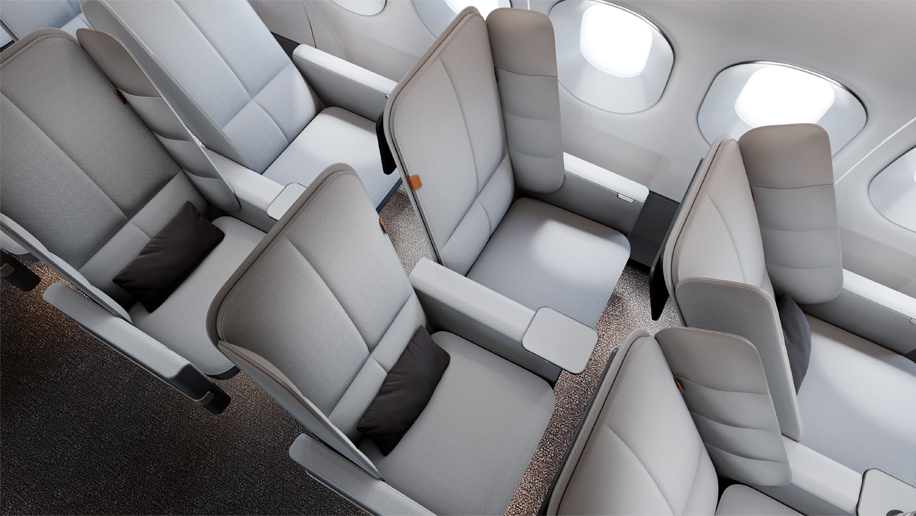Removing the headrest – which, as Miles points out, is something you would rarely have on any kind of seat outside of transport – keeps the seat weight roughly the same or even lighter than existing options.
“We’re currently trying to retrofit this onto existing premium seats. We’ve taken the same envelope of foam, basically the back of the seat is just foam and leather, it’s quite simple,” Miles said.
“The big change is the introduction of the composite panel, and the wing which allows it to move, but it’s still very lightweight because we’ve removed the headrest.”
The team has worked with SWS to make the design certifiable, and they say they are currently in discussions with several airlines about potential retrofits.
The difference with some other new concepts is that since the wings would be retrofitted onto existing seats, it would cut back on waste and the time taken to install.
On why there has been so little innovation in economy seating, he said:
“I think people have been fixated on pitch and thinness of the back, and not about how you move. When I’m on a plane I like to curl into the seat.
“People don’t think in those terms, they think the aircraft is dictating how you should move and what comfort means, when in fact it’s something much more simplistic than that.”
New Territory has launched a new company, Universal Movement, that will specifically look at innovation in high-density travel.
This seat, which is called Interspace, is its first project.
So is it a game changer, or will it join the pile of economy seat concepts that may never take to the skies? Let us know what you think in comments.
It certainly looks more appealing than these “saddle seats”.


